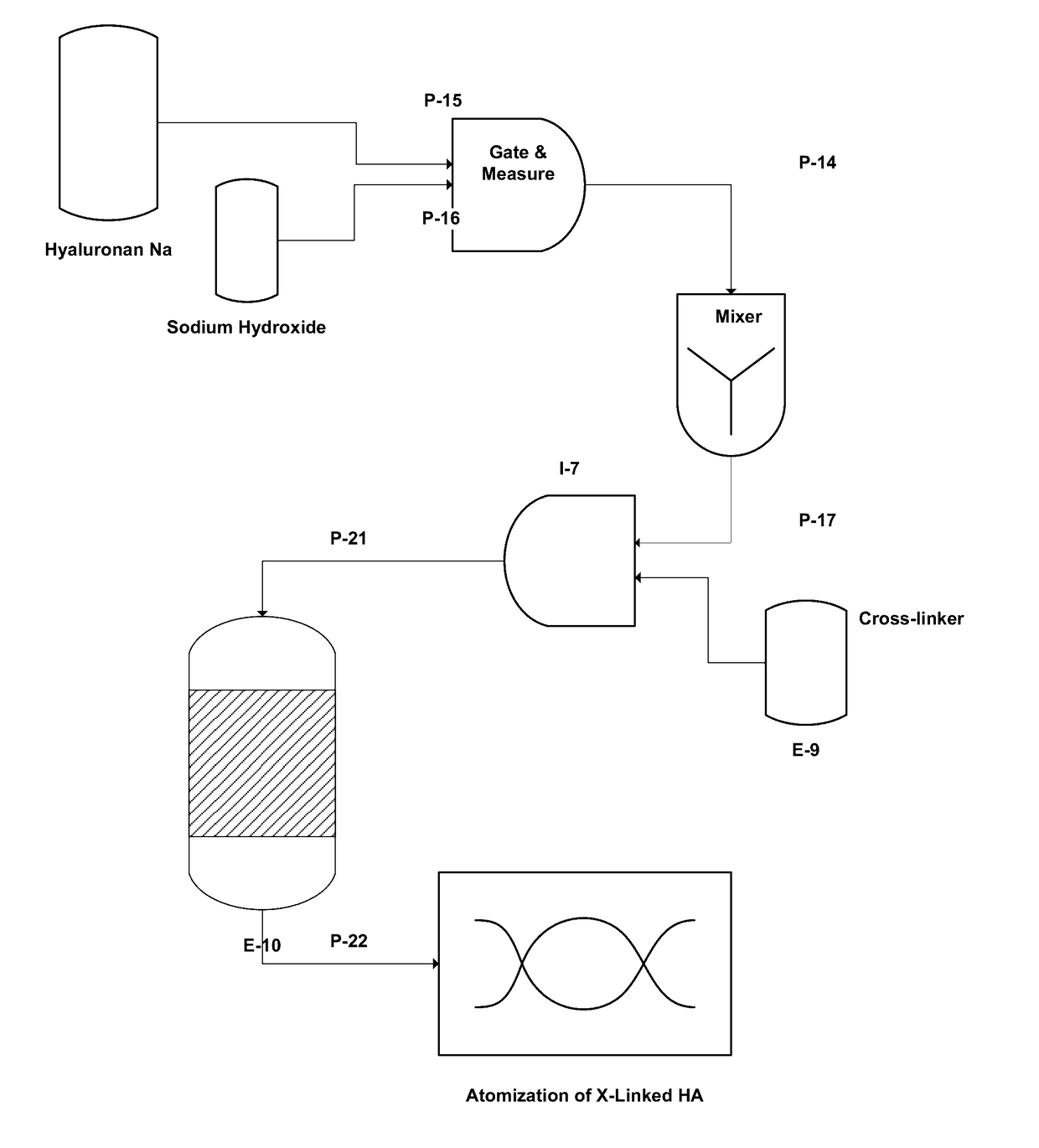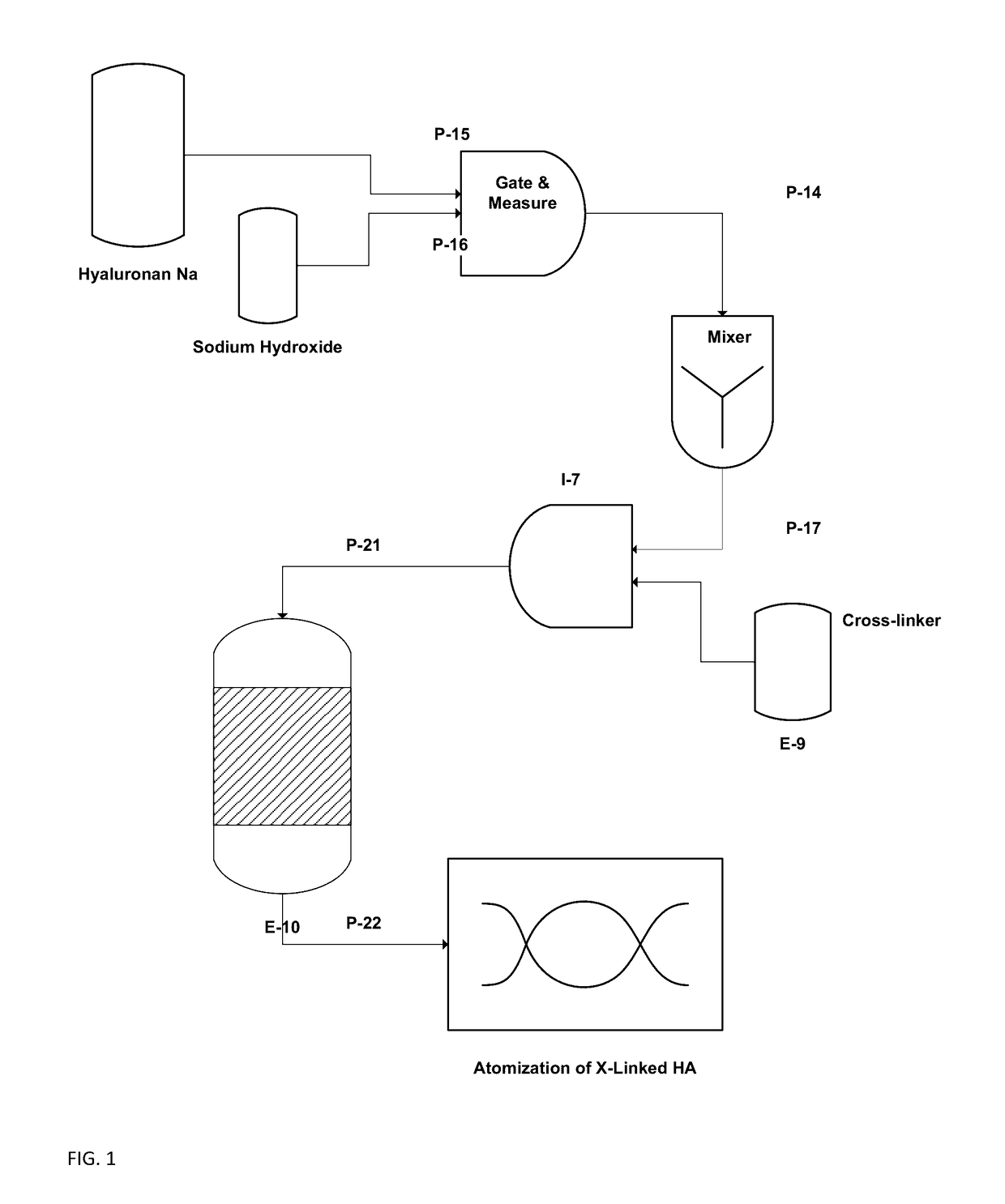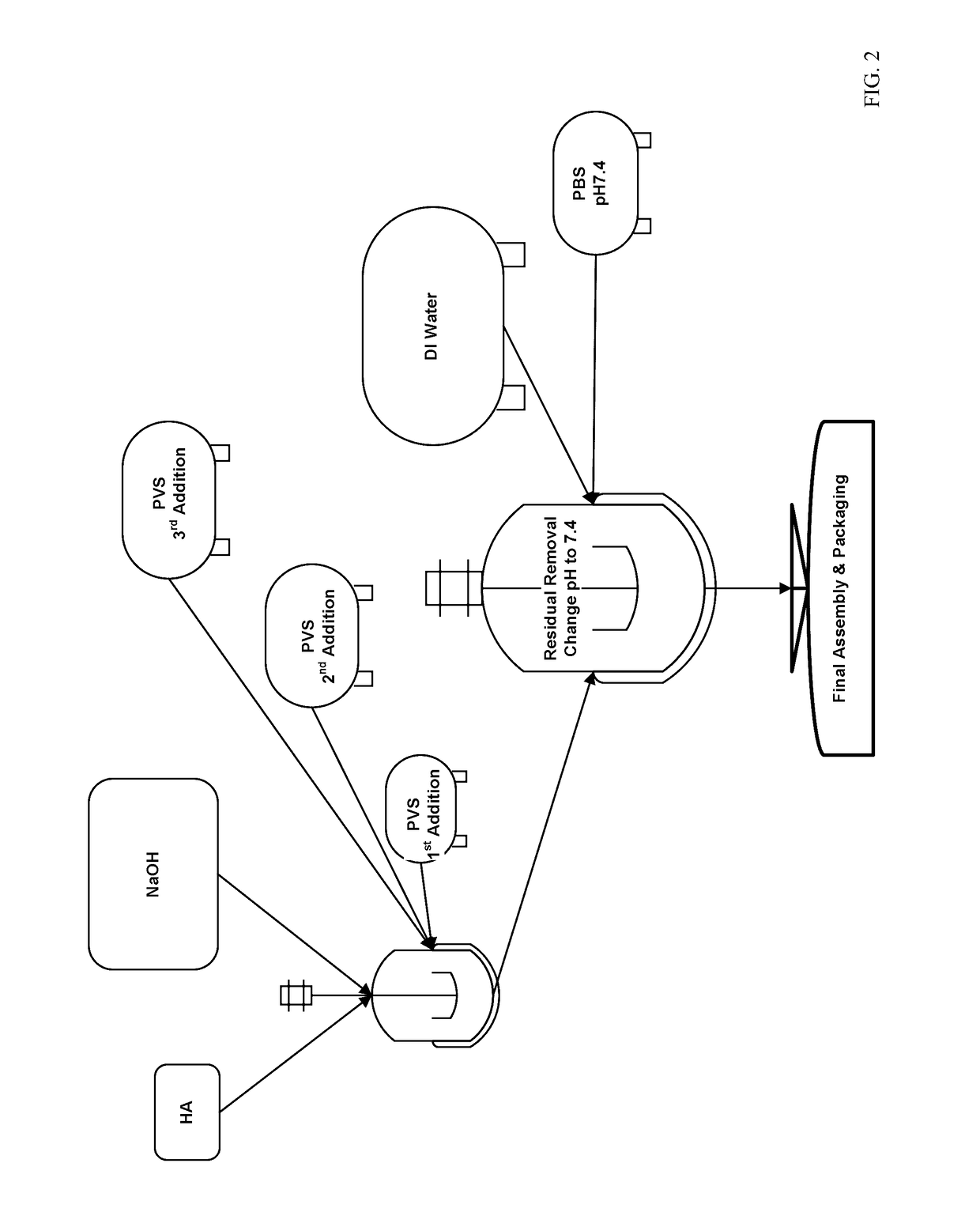Injectable filler
- Summary
- Abstract
- Description
- Claims
- Application Information
AI Technical Summary
Benefits of technology
Problems solved by technology
Method used
Image
Examples
example 1
on of DVS Crosslinked Microparticles in Emulsion
[0052]This example illustrates the preparation of DVS-crosslinked microparticles. Sodium hyaluronate (HA, 580 kDa, 1.90 g) was dissolved in aqueous NaOH (0.2 M, 37.5 ml) by vigorous stirring at room temperature for 3 hours until a homogenous solution was obtained. Sodium chloride (0.29 g) was added and mixed shortly. Mineral oil (10.0 g) and ABIL® EM 90 surfactant (Cetyl PEG / PPG-10 / 1 Dimethicone, 1.0 g) were mixed by stirring.
[0053]Divinylsulfone (DVS, 320 microliter) was added to the aqueous alkaline HA-solution and mixed for 1 min. to obtain a homogeneous distribution in the aq. phase. The water phase was then added within 2 minutes to the oil phase with mechanical stirring at low speed. An emulsion was formed immediately and stirring was continued for 30 minutes at room temperature. The emulsion was left over night at room temperature. The emulsion was neutralized to pH 7.0 by addition of aq. HCl (4 M, approx. 2.0 ml) and stirred fo...
example 2
on of DVS Crosslinked Microparticles in Emulsion Neutralized with Use of pH Indicator
[0054]This example illustrates the preparation of DVS-crosslinked microparticles with neutralization using a pH indicator. Sodium hyaluronate (HA, 580 kDa, 1.88 g) was dissolved in aqueous NaOH (0.2 M, 37.5 ml) by vigorous stirring at room temperature for 2 hours until a homogenous solution was obtained. Bromothymol blue pH indicator (equivalent range pH 6.6-6.8) was added (15 drops, blue color in solution). Sodium chloride (0.25 g) was added and mixed shortly.
[0055]Mineral oil (10.0 g) and ABIL® EM 90 surfactant (Cetyl PEG / PPG-10 / 1 Dimethicone, 1.0 g) were mixed by stirring.
[0056]Divinylsulfone (DVS, 320 microliter) was added to the aqueous alkaline HA-solution and mixed very vigorously for 30 to 60 seconds to obtain a homogeneous distribution in the aq. phase. The water phase was then added within 30 sec. to the oil phase with mechanical stirring at 400 RPM. An emulsion was formed immediately and ...
example 3
aration of Emulsion, Swelling and Isolation of Microparticles
[0057]This example illustrates the breakage of the W / O emulsion followed by phase separation and dialysis. The crosslinked HA microparticles were separated from the W / O emulsion by organic solvent extraction. The W / O emulsion (5 g) and a mixture of n-butanol / chloroform (1 / 1 v %, 4.5 ml) was mixed vigorously by whirl mixing in a test tube at room temperature. Extra mQ-water (20 ml) was added to obtain phase separation. The test tube was centrifuged and three phases were obtained with the bottom phase being the organic phase, middle phase of gel particles and upper phase of clear aqueous solution. The top and bottom phases were discarded and the middle phase of gel particles was transferred into a dialysis tube (MWCO 12-14,000, Diameter 29 mm, Vol / Length 6.4 ml / cm). The sample was dialyzed overnight at room temperature in MilliQ®-water. The dialysate was changed two more times and left overnight. The resulting gel was thick ...
PUM
| Property | Measurement | Unit |
|---|---|---|
| Volume | aaaaa | aaaaa |
| Volume | aaaaa | aaaaa |
| Volume | aaaaa | aaaaa |
Abstract
Description
Claims
Application Information
 Login to View More
Login to View More - R&D
- Intellectual Property
- Life Sciences
- Materials
- Tech Scout
- Unparalleled Data Quality
- Higher Quality Content
- 60% Fewer Hallucinations
Browse by: Latest US Patents, China's latest patents, Technical Efficacy Thesaurus, Application Domain, Technology Topic, Popular Technical Reports.
© 2025 PatSnap. All rights reserved.Legal|Privacy policy|Modern Slavery Act Transparency Statement|Sitemap|About US| Contact US: help@patsnap.com



